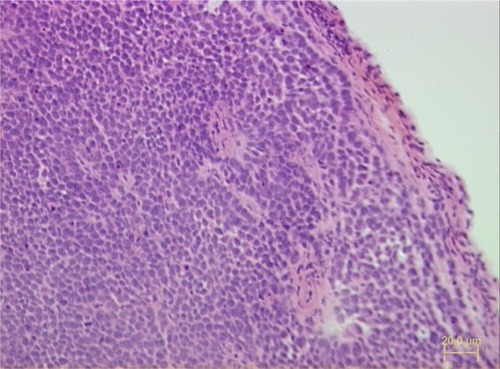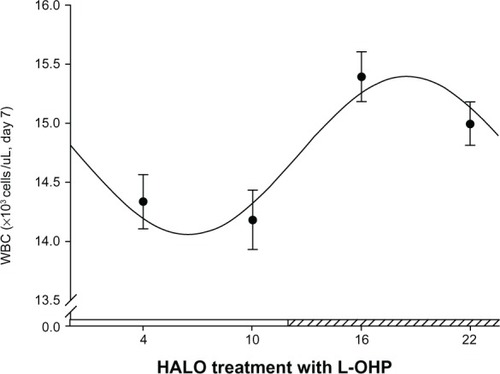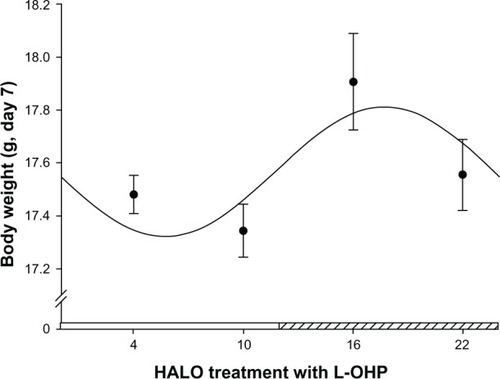Figures & data
Figure 1 Pathological section of tumor formed 3 weeks after the inoculation of Tca8113 cells into the cheek of nude mice (hematoxylin and eosin stain, ×200).

Table 1 Drug efficacy and adverse reactions in control and experimental tumor-bearing mice 7 days after L-OHP injection
Figure 2 Cosine fitting curve of the survival times of tumor-bearing mice injected with L-OHP at four different time points.
Abbreviations: L-OHP, oxaliplatin; HALO, hours after light onset.

Figure 3 Cosine fitting curve of the WBC counts of tumor-bearing mice injected with L-OHP at four different time points.
Abbreviations: L-OHP, oxaliplatin; HALO, hours after light onset; WBC, white blood cell.

Figure 4 Cosine fitting curve of the body weights of tumor-bearing mice injected with L-OHP at four different time points.
Abbreviations: L-OHP, oxaliplatin; HALO, hours after light onset.
